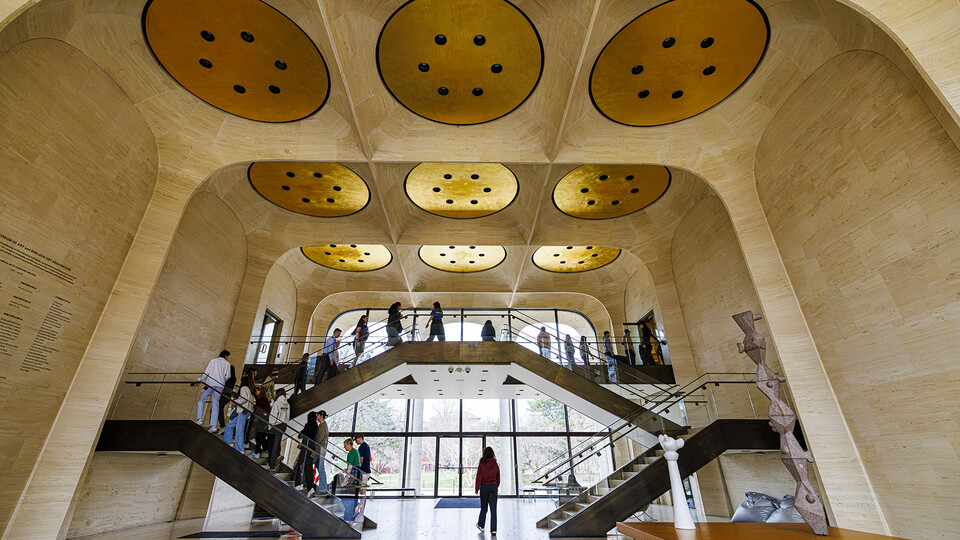
More than 100 attendees joined UNL’s Department of Chemistry for the Dec. 10 unveiling of a newly refurbished Hamilton Hall space dedicated to advancing research in an ever-important cornerstone of modern chemistry.
As the new home to the Nebraska Cluster for Computational Chemistry, the fourth-floor space of Hamilton’s east wing will accommodate the NC3’s three inaugural faculty: Joseph Francisco, dean of the College of Arts and Sciences; Xiao Cheng Zeng, Ameritas University Professor of Chemistry; and Hui Li, associate professor of chemistry.
Spurred in part by Francisco’s 2014 move from Purdue University to UNL, the space will also serve as a collaborative hub for students, postdoctoral researchers and visiting scholars.
“It’s about creating an environment that stimulates ideas,” said Francisco, the Elmer H. and Ruby M. Cordes Chair of Chemistry. “It’s really exciting to encourage students to explore their creativity.
“We have the capacity, the brain-power, the enthusiasm and the commitment from students to push the envelope and solve challenging global problems that need scientific solutions.”
David Berkowitz, chair of the department, pointed to the successful research partnership between Zeng and Francisco as the impetus for launching the NC3.
“It gives us an idea of the sort of things that can happen when the scientists, grad students and postdocs who will sit in this physical space can collaborate, exchange ideas and perform computations together,” Berkowitz said. “This group … will continue to push experimentalists to find structures they have not already seen or that may be lying under the earth.”
The department also revealed a small mural that graces a prominent wall in the new space and visually encapsulates the work to be conducted there. It depicts a configuration of water-housed hydrogen molecules passing passing through a carbon nanotube – an enclosure one billion times thinner than a human hair – as predicted by a signature computational study from Zeng, Francisco and colleagues.
Zeng and Francisco’s initial collaborations, which began when Francisco was at Purdue, sprang from a mutual interest in the molecular-level properties and dynamics of water.
“At the time, we were interested in hydrogen storage and posed the question, ‘Could we use water to store hydrogen?’ So, we started exploring water cages to try to understand what was the optimal kind of orientation and configuration that would allow hydrogen to be trapped for a very short time,” Francisco said.
That question has expanded to many others, Zeng said, including the ways that atmospheric chemistry may shape the accumulation and spread of air pollution. Their ongoing and future research will rely on algorithms and simulations of intermolecular interactions developed by Li.
The NC3 researchers will also continue working with engineering and physics faculty to explore designs for nanomaterials that boast optical, electrical, magnetic and mechanical properties critical to the development of new technologies.


